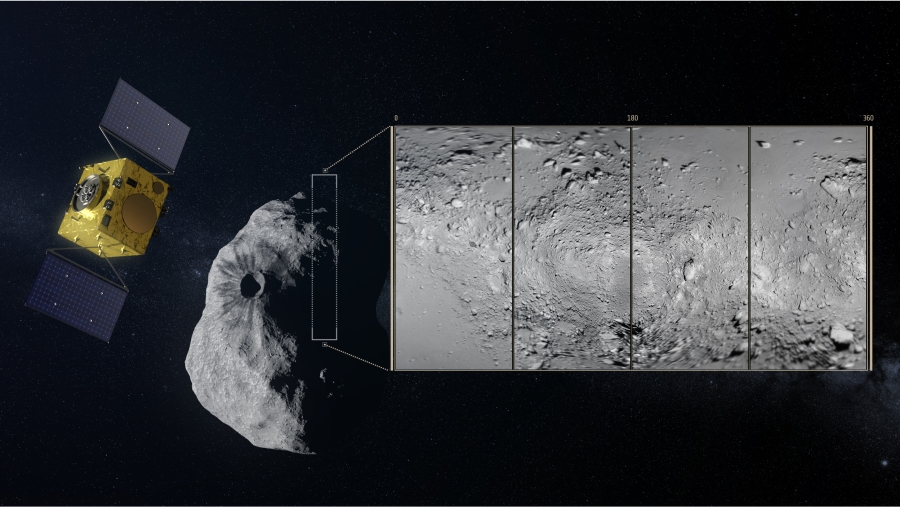To follow our news:
ESA Selects SPACEBEL to Develop Hera’s On Board Software
ESA’s Hera mission – named after the Greek goddess of marriage – is all about deep space exploration. In collaboration with NASA’s DART (Double Asteroid Redirection Test) spacecraft, the Hera probe is meant to assess the consequences of a collision with an asteroid in order to test deflection techniques allowing us to defend our planet Earth from threatening asteroids.
The mission’s target is the binary near-Earth asteroid system composed of the 780m diameter Didymos and its 160m diameter moonlet called Didymoon. In October 2022, if all goes according to plan, the refrigerator-sized DART will collide with the smaller body at 6km/s, thus shifting the orbit around its parent rock.
Due for launch in 2023 and expected to arrive at the Didymos system in 2026, Hera will analyse the post-crash crater using i.a. laser technology. Moreover, Hera will map the surface of the impacted asteroid through a series of close flybys, thus demonstrating innovative technologies such as autonomous navigation around an asteroid. The spacecraft will also collect important scientific data in order to have a better insight in asteroid structures and compositions.
Furthermore, to enable comparisons with Didymos, ESA considers a flyby of another binary asteroid during the mission’s three-year flight.
With the recent signature of the Hera on board software contract, SPACEBEL is proud to take part in this pioneering Space experiment. Mission critical systems for which failure is not an option is indeed part of SPACEBEL’s DNA.
SPACEBEL is in charge of the central software architecture, engineering and development targeting increased on board autonomy and requiring cutting edge IT technologies.

Hera©ESA Science Office
